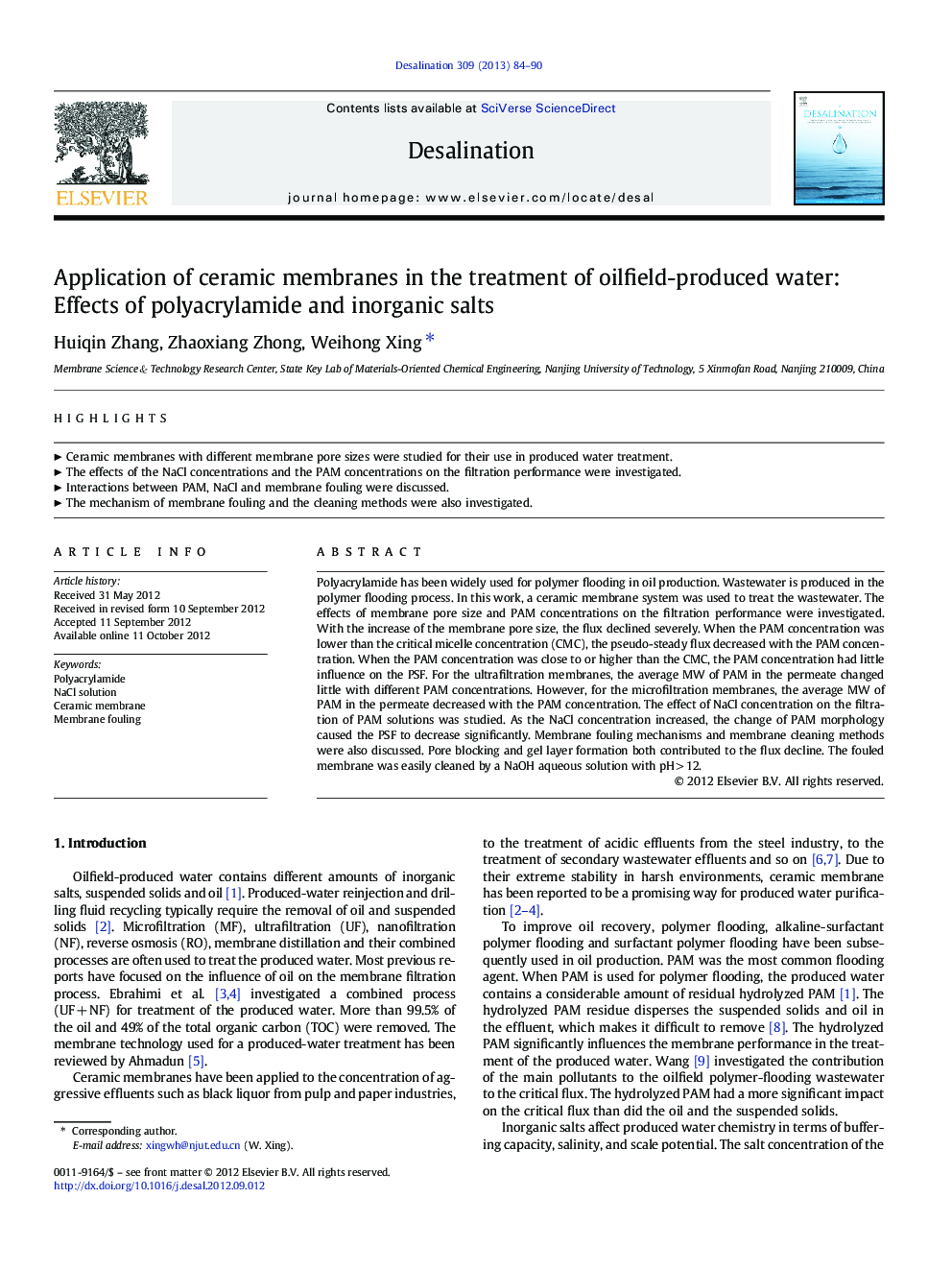| Article ID | Journal | Published Year | Pages | File Type |
|---|---|---|---|---|
| 624065 | Desalination | 2013 | 7 Pages |
Polyacrylamide has been widely used for polymer flooding in oil production. Wastewater is produced in the polymer flooding process. In this work, a ceramic membrane system was used to treat the wastewater. The effects of membrane pore size and PAM concentrations on the filtration performance were investigated. With the increase of the membrane pore size, the flux declined severely. When the PAM concentration was lower than the critical micelle concentration (CMC), the pseudo-steady flux decreased with the PAM concentration. When the PAM concentration was close to or higher than the CMC, the PAM concentration had little influence on the PSF. For the ultrafiltration membranes, the average MW of PAM in the permeate changed little with different PAM concentrations. However, for the microfiltration membranes, the average MW of PAM in the permeate decreased with the PAM concentration. The effect of NaCl concentration on the filtration of PAM solutions was studied. As the NaCl concentration increased, the change of PAM morphology caused the PSF to decrease significantly. Membrane fouling mechanisms and membrane cleaning methods were also discussed. Pore blocking and gel layer formation both contributed to the flux decline. The fouled membrane was easily cleaned by a NaOH aqueous solution with pH > 12.
► Ceramic membranes with different membrane pore sizes were studied for their use in produced water treatment. ► The effects of the NaCl concentrations and the PAM concentrations on the filtration performance were investigated. ► Interactions between PAM, NaCl and membrane fouling were discussed. ► The mechanism of membrane fouling and the cleaning methods were also investigated.
